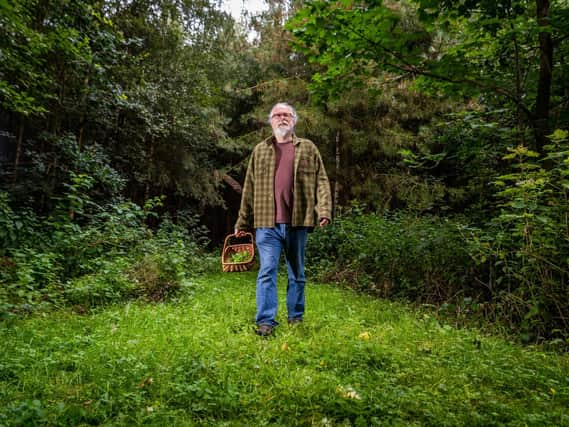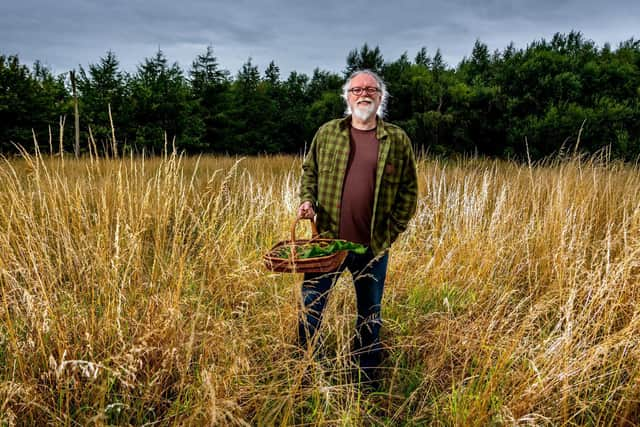Meet the Yorkshire artisan food producers who create gin, soups and jams from foraged hedgerow fruits


Now, as crab apples and wild plums still bend the autumn boughs, with tender rose hips ready for the plucking, there is an abundance of blackthorn sloes ahead of the first frost.
There are simple pleasures to be had in plundering nature's gifts, and in relishing the resulting fruit in jams and crumbles and in tipples with a taste of Yorkshire produce.
Advertisement
Hide AdAdvertisement
Hide Ad"Foraging is at the heart of life in the countryside," says ecologist and conservationist Joff Curtoys, founder of Barton-le-Willows-based artisan spirits distillery Sloemotion.


"It makes a great deal of difference, to get out and walk, and to go slowly. There is a growing interest in the countryside, and our lives outdoors.
"Now is the time to get back out there and see what nature is providing. Everything tastes better if you go out and put the effort in, and picking them only adds to the flavour."
The history of foraging precedes written records, to a time when people lived off the harvest and the gifts of the land they wrought.
Advertisement
Hide AdAdvertisement
Hide AdIt all changed after the Industrial Revolution, when enclosure acts removed the rights of local people to rural lands, before the custom was revived in earnest in the war.
Over recent years, as once-diminished hedgerows were encouraged to grow wild and amid an inclination for society to reconnect with nature, the practice has flourished.
In early summer the elderberries are at their best, for fritters, cordials and wine. October is the time for plucking wild plums, according to the Woodland Trust, for crumbles and jams.
Rosehips, said to stave off winter colds, are in abundance as a syrup or for jellies and jams. And the nuts for roasting, beech, chestnuts and walnuts, ahead of the festive season.
Advertisement
Hide AdAdvertisement
Hide AdChris Bax, a wild food expert from Taste the Wild, which runs courses in Staithes and Boroughbridge, said there is now mounting interest, amid a reconnection with nature.
"It's something in our collective memory, something primal," he said. "We evolved to be hunter gatherers and there is something inherent in us that loves finding things in the wild.
"When you start foraging, you see the beautiful green hedgerows, and then it 'pops' and you start to understand, to see how you can make a jam out of it or flavour alcohol.
"We all know that growing something in your garden tastes so much better than anything bought, and it's the same for finding food to cook," he added.
Advertisement
Hide AdAdvertisement
Hide Ad"When you find there are health benefits - and it's delicious - the reward is immense."
Now is the time for hawthorn haws, for jams and jellies, wood sorrel for salads or ground ivy, a herb from the mint family, Mr Bax suggests.
"There's a lot of fungi this year, it reacts really well to changing weather," he said. "And the sloes are amazing, hedges laden with fruit. In 20 years I've never seen more sloes."
Mr Curtoys, founder of Sloemotion which now has a range of liqueurs and hedgerow spirits, believes that what grows together goes together, in the Yorkshire rhubarb and raspberry, and blackberry and apple tipples they sell.
Advertisement
Hide AdAdvertisement
Hide AdWild nettles, for soups and stews, and the sharp, tart crab apples are in "prolific" supply.
"We walk out into the countryside in the lowlands of Yorkshire and can find all of these," he said. "None are exclusive."
In an unusual year, which saw a warm spring and early summer, before a wet autumn, Mr Curtoys credits the moths, responsible for pollination, for an abundance of sloes.
"Sloes are well known for being capricious, it has to be warm in the evening when the blossom is out," he added.
Advertisement
Hide AdAdvertisement
Hide Ad"Right the way through it was consistently good, and a good bit of pollination has gone on.
"Bees and butterflies get all the appreciation, but moths do the hard work," he added. "They are the real heroes of the hedgerows.
"These are the real treats of the countryside, and they are there to be enjoyed."
Comment Guidelines
National World encourages reader discussion on our stories. User feedback, insights and back-and-forth exchanges add a rich layer of context to reporting. Please review our Community Guidelines before commenting.